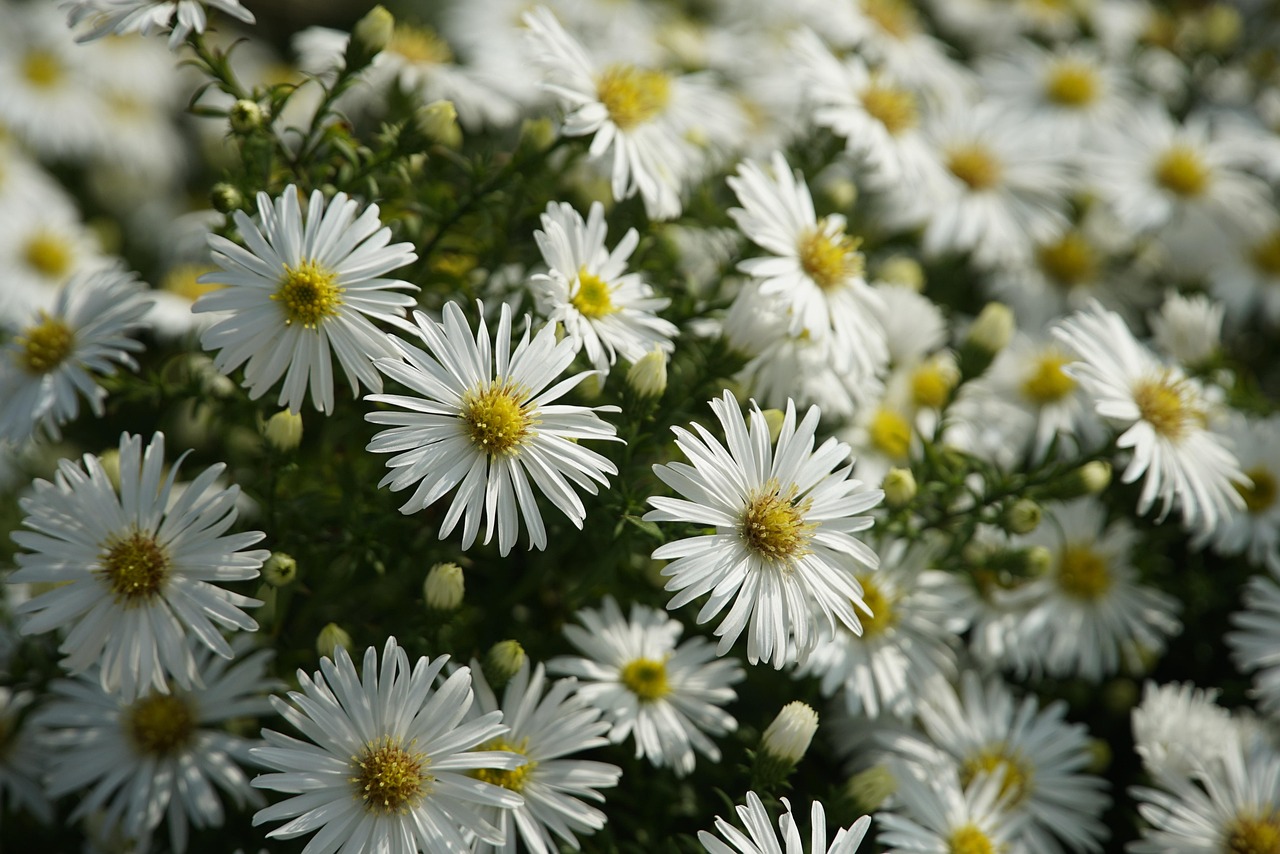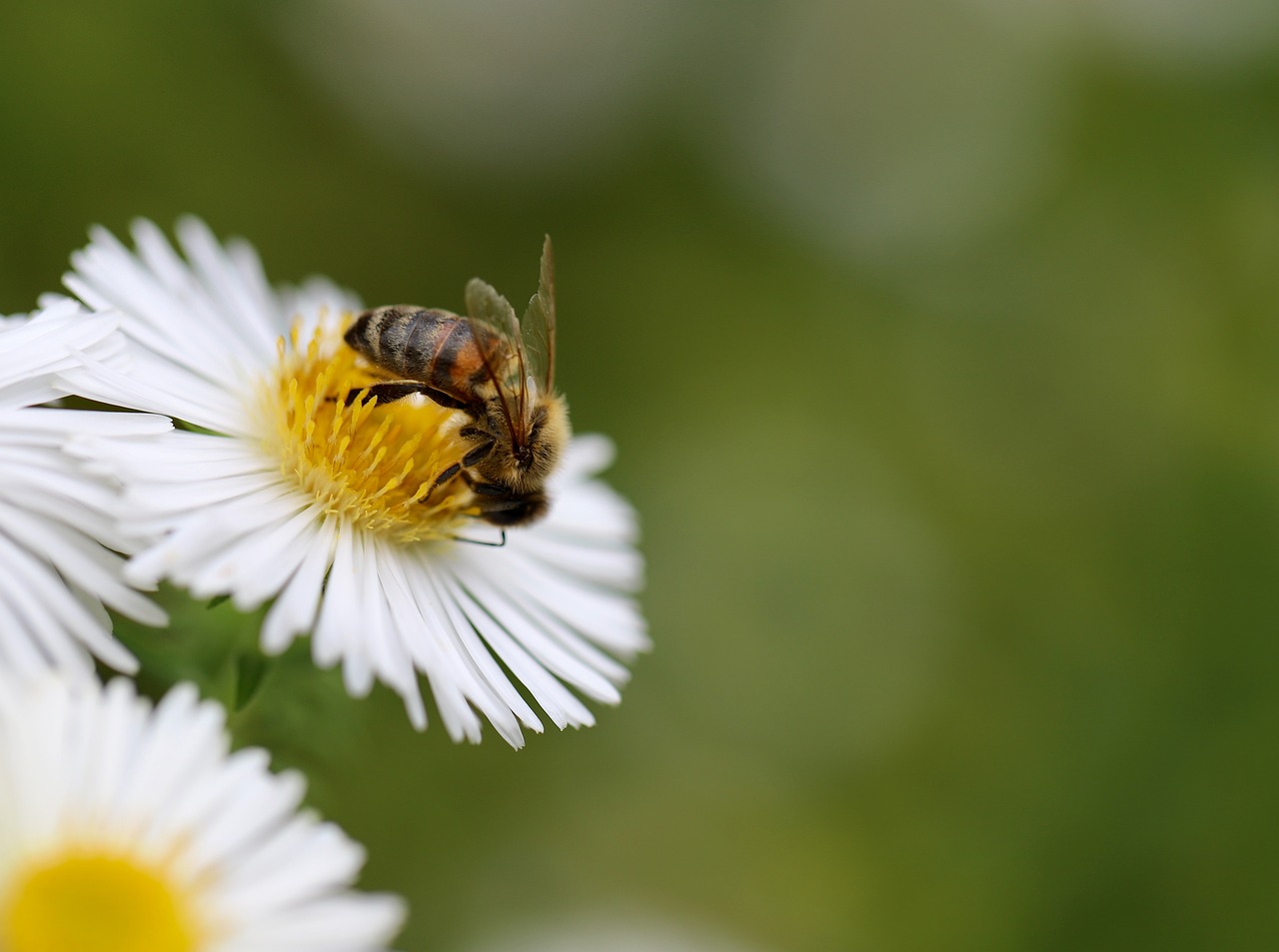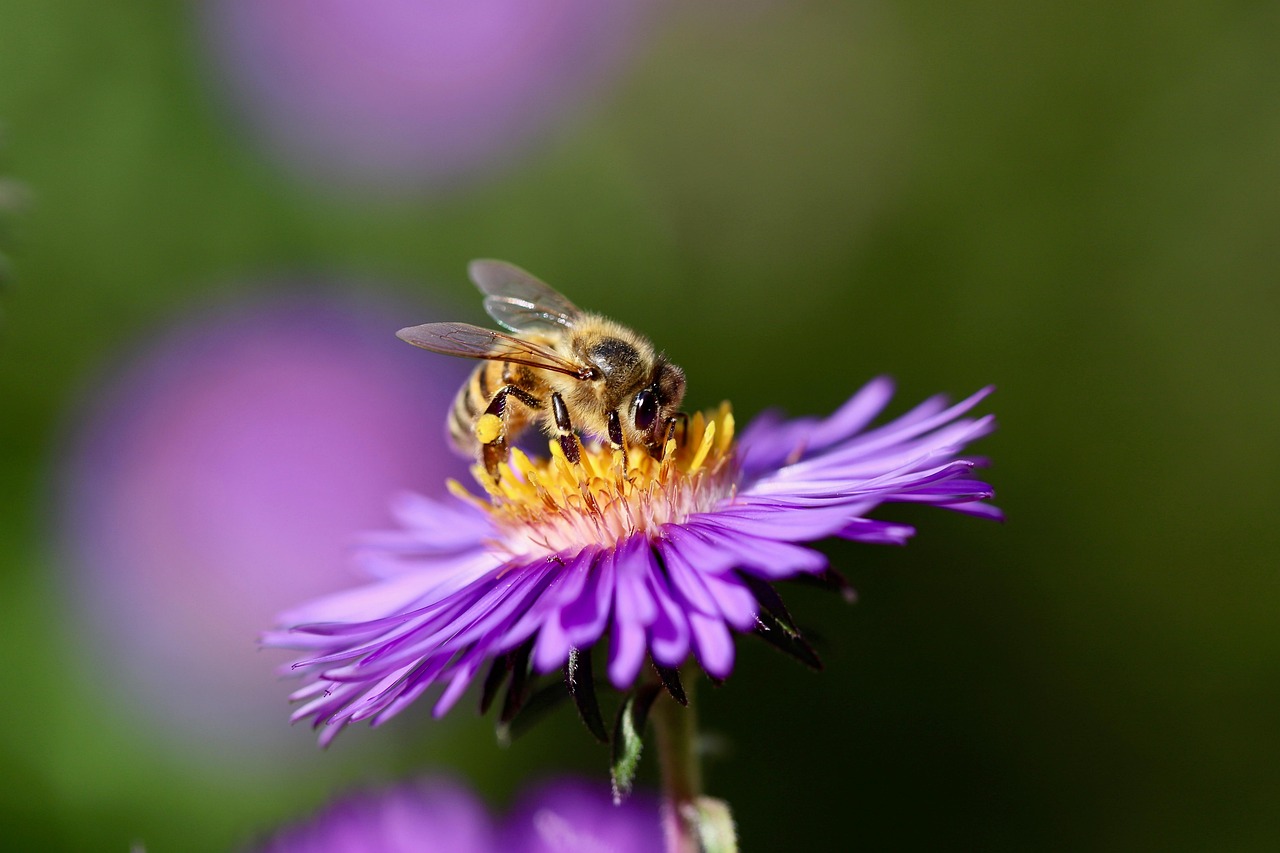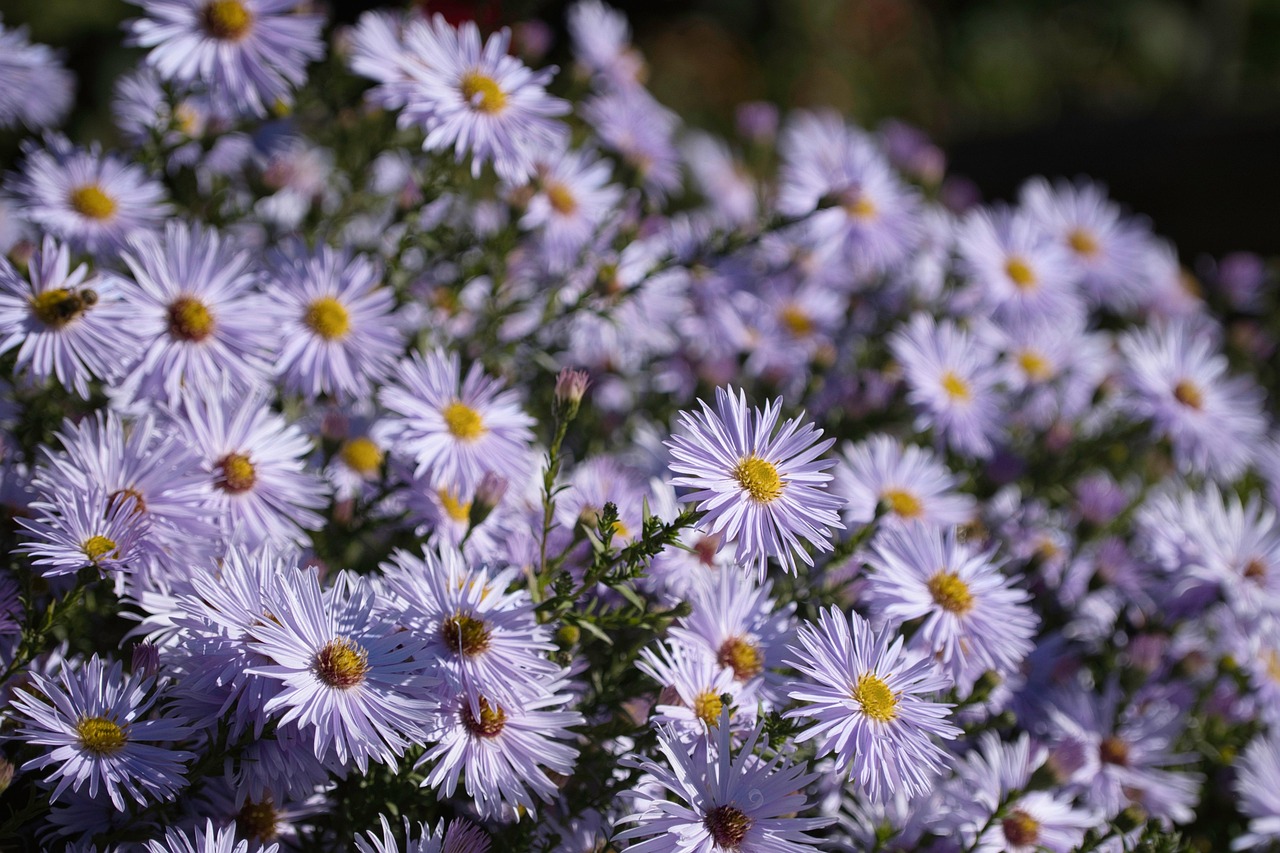Managing aster plant problems involves identifying common issues such as pests, diseases, and environmental factors. Solutions include proper watering, pest control, and ensuring optimal soil conditions to promote healthy growth and vibrant blooms.
Asters are beloved perennials known for their beautiful blooms in late summer and fall. They come in various colors and sizes, making them a popular choice for gardeners. However, like all plants, asters can face several challenges that may hinder their growth and flowering. Understanding these problems is essential to maintaining their health and beauty.

Some common issues that affect aster plants include:
- Pests such as aphids and spider mites.
- Diseases like powdery mildew and root rot.
- Environmental stress from poor soil or inadequate sunlight.
- Nutrient deficiencies that affect overall plant vigor.
Addressing these challenges requires knowledge of the specific symptoms and appropriate management strategies. This guide will provide comprehensive insights into diagnosing and treating various aster plant problems. Whether you’re a beginner or an experienced gardener, having this information at your fingertips can help you cultivate thriving aster plants.
Common Aster Plant Problems
Identifying issues with your asters is the first step toward effective management. Below are some of the most frequently encountered problems along with their symptoms and potential solutions.

| Problem | Symptoms | Solutions |
|---|---|---|
| Aphids | Leaves curling, yellowing, or sticky residue on plants. | Introduce beneficial insects like ladybugs or use insecticidal soap. |
| Powdery Mildew | White powdery spots on leaves. | Improve air circulation and apply fungicides if necessary. |
| Root Rot | Wilting despite adequate watering; brown, mushy roots. | Ensure well-draining soil; avoid overwatering. |
| Spider Mites | Fine webbing on leaves; leaves may turn yellow or fall off. | Increase humidity and use miticides if needed. |
| Nutrient Deficiency | Pale leaves, stunted growth. | Test soil and amend with appropriate fertilizers. |
Understanding the signs of these problems can help you take action before they escalate. Regular observation of your plants allows for early detection, which is key to successful management. Additionally, maintaining a healthy growing environment can significantly reduce the likelihood of these issues arising in the first place.
Preventative Measures for Aster Plants
Preventing problems before they occur can save you time and effort in managing aster plant health. Here are some effective strategies:
- Choose disease-resistant varieties when purchasing asters.
- Provide adequate spacing between plants to improve airflow.
- Utilize mulch to retain soil moisture and suppress weeds.
- Regularly inspect plants for early signs of pests or disease.
- Water early in the day to allow foliage to dry by evening, reducing disease risk.
By implementing these preventative measures, you can create a more robust environment for your asters. A proactive approach helps ensure that your plants remain healthy and vibrant throughout their growing season. In the following sections, we will delve deeper into specific pests, diseases, and detailed treatment options to help you effectively manage any aster plant issues that may arise.

Identifying Pests That Affect Aster Plants
Pests are one of the most common challenges gardeners face when growing aster plants. Identifying these pests early can help in taking swift action to prevent significant damage. Below are some of the most prevalent pests that affect asters.
Aphids
Aphids are small, soft-bodied insects that can be green, black, or brown. They often cluster on the undersides of leaves and feed by sucking sap from the plant.
- Symptoms: Curling or yellowing leaves, sticky residue on plants, and presence of ants attracted to the honeydew.
- Management: Introduce natural predators like ladybugs, or spray plants with insecticidal soap to eliminate infestations.
Spider Mites
Spider mites are tiny arachnids that thrive in dry conditions. They can be difficult to see without a magnifying glass, but their damage is often visible.

- Symptoms: Fine webbing on leaves, yellowing leaves, and leaf drop.
- Management: Increase humidity around plants and use miticides if necessary. Regularly hosing down plants can also help dislodge them.
Japanese Beetles
Japanese beetles are metallic green and bronze insects that feed on a wide variety of plants, including asters.
- Symptoms: Skeletonized leaves where only the veins remain, and visible beetles on flowers.
- Management: Handpick beetles from plants in the morning when they are less active or use traps specifically designed for Japanese beetles.
Common Diseases Affecting Aster Plants
In addition to pests, aster plants can suffer from various diseases that can severely impact their health and appearance. Early detection is crucial for effective management.
Powdery Mildew
This fungal disease thrives in warm, dry conditions and appears as white powdery spots on the leaves.
- Symptoms: White, powdery spots on leaves; stunted growth; yellowing foliage.
- Management: Improve air circulation around plants, avoid overhead watering, and apply fungicides if necessary.
Root Rot
Root rot is often caused by overwatering and poorly drained soil. The roots become mushy, leading to plant decline.
- Symptoms: Wilting plants despite sufficient watering, brown and mushy roots.
- Management: Ensure well-draining soil and reduce watering frequency. If root rot is suspected, remove affected plants and treat the remaining soil with fungicides.
Aster Yellows
Aster yellows is a viral disease spread by leafhoppers and can severely affect aster plants.
- Symptoms: Stunted growth, yellowing leaves, and abnormal flower development.
- Management: Remove infected plants immediately to prevent further spread and control leafhopper populations through insecticides or natural predators.
Cultural Practices to Enhance Aster Health
Cultural practices play a significant role in preventing pest infestations and diseases in aster plants. By adopting specific strategies, you can create a healthier environment for your asters.
- Soil Health: Regularly amend soil with organic matter to improve texture and fertility.
- Water Management: Water deeply but infrequently to encourage strong root development while preventing rot.
- Fertilization: Use a balanced fertilizer during the growing season to provide essential nutrients without encouraging excessive foliage growth.
- Pest Monitoring: Set up sticky traps to monitor pest populations and take action before infestations occur.
By understanding common pests and diseases affecting aster plants and adopting effective cultural practices, you can significantly enhance their health and resilience. In the next section, we will explore specific treatment options for each identified problem and how to implement them effectively. This knowledge will empower you to maintain beautiful and thriving aster plants in your garden.
Treatment Options for Aster Plant Problems
When aster plants encounter issues, timely treatment is crucial for restoring their health. This section will provide detailed information on how to address common pests and diseases effectively. Understanding the appropriate treatments will help you keep your asters thriving and blooming beautifully.
Pest Management Strategies
Effective pest management involves both prevention and treatment. Below are some strategies tailored to common pests affecting aster plants.
Aphid Control
Aphids can reproduce quickly, so early intervention is essential. Here are some methods to manage aphid populations:
- Insecticidal Soap: Spray infested plants with insecticidal soap, which suffocates aphids without harming beneficial insects.
- Neem Oil: Apply neem oil, a natural pesticide that disrupts the life cycle of aphids. Use it as directed on the label.
- Companion Planting: Plant flowers like marigolds or nasturtiums nearby to attract beneficial insects that consume aphids.
Spider Mite Management
Controlling spider mites requires a different approach due to their ability to thrive in dry conditions:
- Increase Humidity: Misting the plants or placing a tray of water nearby can create a humid environment that deters spider mites.
- Miticides: Use miticides specifically designed for spider mites. Apply according to the instructions for effective control.
- Regular Watering: Ensure consistent watering to keep plants healthy and reduce stress, which makes them more susceptible to mites.
Disease Treatment Methods
Addressing diseases in aster plants requires specific treatments based on the type of disease present. Below are common diseases and effective remedies.
Treating Powdery Mildew
Powdery mildew can be a persistent problem, especially in humid conditions. Here are steps to manage this fungal disease:
- Fungicides: Apply fungicides that target powdery mildew. Products containing potassium bicarbonate or sulfur are effective.
- Remove Affected Leaves: Prune affected leaves to improve air circulation and minimize further spread of the fungus.
- Preventative Sprays: Use preventative fungicidal sprays at the first sign of disease or during high humidity periods to ward off infection.
Managing Root Rot
Root rot can be devastating, but with proper management, you can save your asters:
- Soil Drainage: Ensure that the soil drains well. If needed, amend with sand or perlite to improve drainage.
- Remove Infected Plants: If root rot is present, remove infected plants immediately to prevent spread and improve soil health.
- Fungicides: Treat remaining plants with fungicides labeled for root rot treatment if necessary.
Aster Yellows Treatment
Aster yellows requires swift action to prevent further spread among your plants:
- Immediate Removal: Remove and destroy infected plants as soon as symptoms appear to protect other asters and nearby plants.
- Pest Control: Focus on controlling leafhoppers through insecticides or introducing natural predators like lacewings.
Using Organic and Chemical Treatments
Choosing between organic and chemical treatments depends on your gardening philosophy and the severity of the problem. Here’s a breakdown of both options:
| Treatment Type | Description | Advantages | Disadvantages |
|---|---|---|---|
| Organic Treatments | Utilizes natural substances such as neem oil, insecticidal soap, and beneficial insects. | Environmentally friendly and less harmful to beneficial organisms. | Might take longer to see results; may be less effective in severe infestations. |
| Chemical Treatments | Synthetic pesticides and fungicides that target specific pests and diseases. | Fast-acting and often highly effective against severe infestations. | Potentially harmful to beneficial insects; requires careful handling and application. |
Selecting the right treatment method requires consideration of the specific pest or disease, your garden’s ecosystem, and your personal preferences. By staying informed and proactive, you can effectively manage any problems that arise with your aster plants. In the next section, we will explore seasonal care practices that can further enhance the health and vitality of your asters throughout the growing season.
Seasonal Care Practices for Aster Plants
To maintain the health and vibrancy of aster plants, it is essential to adopt seasonal care practices. These practices will help ensure that your asters remain resilient against pests and diseases throughout the year. Here are some key seasonal tasks to consider:
Spring Care
Spring is a critical time for asters as they emerge from dormancy. Here are steps to take in the spring:
- Clean Up Debris: Remove any dead leaves or debris from around the plants to reduce the risk of disease.
- Soil Testing: Conduct a soil test to determine nutrient levels and pH. Amend the soil as needed.
- Fertilization: Apply a balanced fertilizer to promote healthy growth as the plants begin to leaf out.
- Watering: Ensure that asters receive adequate moisture, especially during dry spells.
Summer Care
During the summer months, asters require regular attention to ensure they thrive:
- Mulching: Apply a layer of mulch around the base of the plants to retain moisture and suppress weeds.
- Pest Monitoring: Regularly inspect plants for signs of pests or diseases. Early detection leads to more effective management.
- Deadheading: Remove spent flowers to encourage further blooming and improve overall plant appearance.
Fall Care
As fall approaches, it’s important to prepare asters for the colder months:
- Final Watering: Water plants thoroughly before winter to ensure they have enough moisture stored in the roots.
- Cutting Back: After blooms fade, cut back spent stems but leave about 6 inches of growth to protect the crown.
- Frost Protection: In regions with harsh winters, consider covering your asters with mulch to protect them from frost damage.
Winter Care
During winter, asters go dormant, but some care is still necessary:
- Avoid Disturbance: Minimize disturbance around the plants to protect their root systems.
- Monitor Moisture: If the winter is dry, check soil moisture levels occasionally and water if necessary.
Final Thoughts
Managing aster plant problems involves understanding both the challenges they face and the strategies available for addressing those challenges. By recognizing common pests and diseases, implementing effective treatment options, and practicing diligent seasonal care, you can cultivate healthy and vibrant aster plants in your garden.
The key takeaways from this guide include:
- Identify common pests such as aphids, spider mites, and Japanese beetles, along with their symptoms and management strategies.
- Recognize diseases like powdery mildew, root rot, and aster yellows, and apply appropriate treatments promptly.
- Utilize both organic and chemical treatments depending on your gardening preferences and the severity of issues.
- Adopt seasonal care practices that support overall plant health and resilience throughout the year.
By staying proactive and informed, you can enhance the beauty of your asters while minimizing potential problems. A well-managed garden not only brings joy but also contributes to the overall health of your local ecosystem. Enjoy nurturing your asters, and may they flourish in your garden for years to come!
